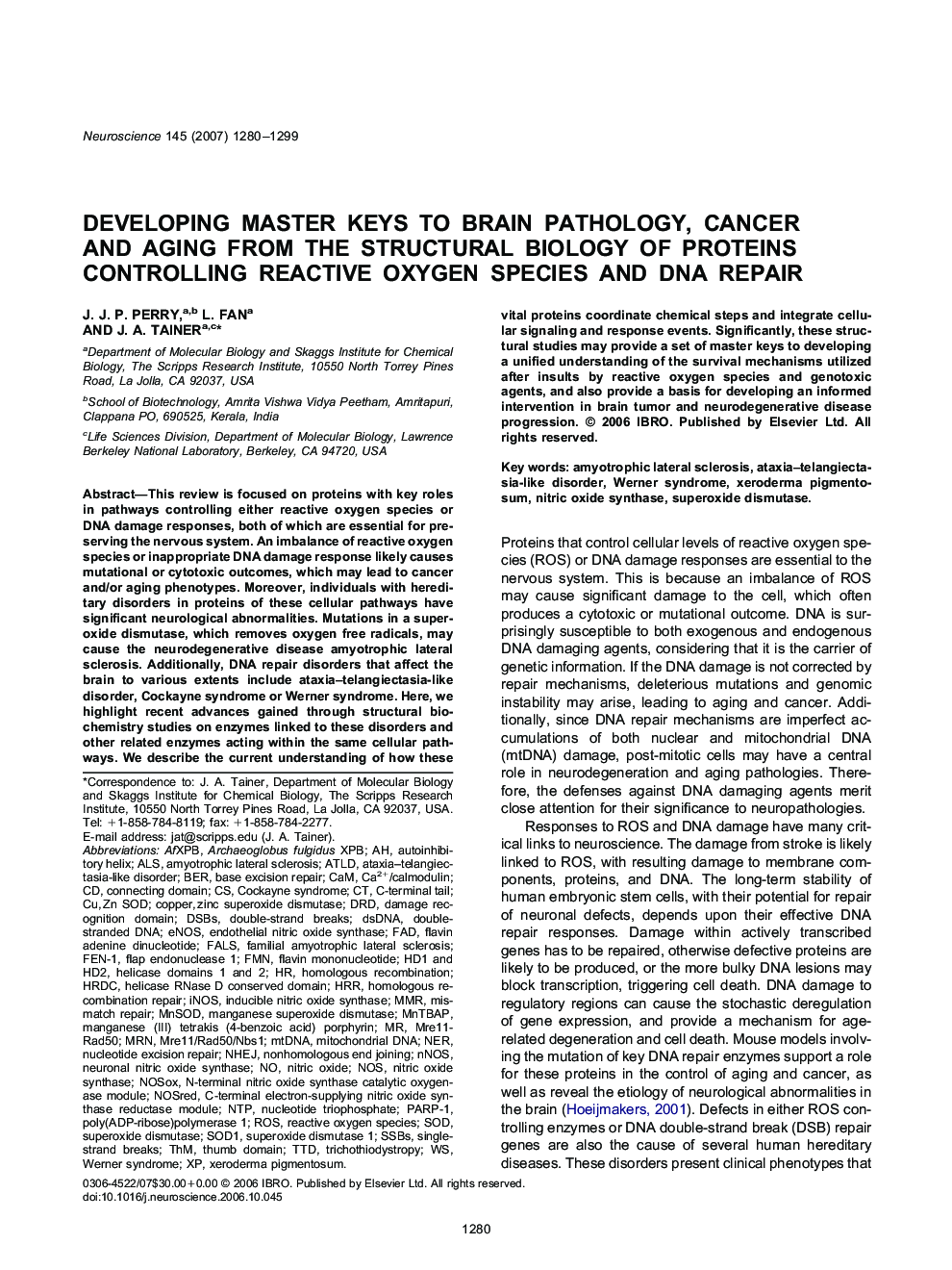| Article ID | Journal | Published Year | Pages | File Type |
|---|---|---|---|---|
| 6278460 | Neuroscience | 2007 | 20 Pages |
Abstract
This review is focused on proteins with key roles in pathways controlling either reactive oxygen species or DNA damage responses, both of which are essential for preserving the nervous system. An imbalance of reactive oxygen species or inappropriate DNA damage response likely causes mutational or cytotoxic outcomes, which may lead to cancer and/or aging phenotypes. Moreover, individuals with hereditary disorders in proteins of these cellular pathways have significant neurological abnormalities. Mutations in a superoxide dismutase, which removes oxygen free radicals, may cause the neurodegenerative disease amyotrophic lateral sclerosis. Additionally, DNA repair disorders that affect the brain to various extents include ataxia-telangiectasia-like disorder, Cockayne syndrome or Werner syndrome. Here, we highlight recent advances gained through structural biochemistry studies on enzymes linked to these disorders and other related enzymes acting within the same cellular pathways. We describe the current understanding of how these vital proteins coordinate chemical steps and integrate cellular signaling and response events. Significantly, these structural studies may provide a set of master keys to developing a unified understanding of the survival mechanisms utilized after insults by reactive oxygen species and genotoxic agents, and also provide a basis for developing an informed intervention in brain tumor and neurodegenerative disease progression.
Keywords
SOD1NHEJNOSiNOSTTDeNOSBERDRDnNOSMnSODDSBsMRNMMRMnTBAPHRDCTHMMre11/Rad50/Nbs1FEN-1poly(ADP-ribose)polymerase 1NTPHRRdsDNAflavin adenine dinucleotideFMNPARP-1Ca2+/calmodulindouble-stranded DNAMitochondrial DNANERxeroderma pigmentosumROSSSBsamyotrophic lateral sclerosisfamilial amyotrophic lateral sclerosisATLDFADALSnucleotide excision repairHomologous recombination repairmismatch repairbase excision repairfALSC-terminal tailmtDNACAMSODinducible nitric oxide synthaseendothelial nitric oxide synthaseneuronal nitric oxide synthaseWerner syndromesuperoxide dismutase 1manganese superoxide dismutaseSuperoxide dismutaseCockayne syndromesingle-strand breaksdouble-strand breaksflavin mononucleotideFlap endonuclease 1CopperHomologous recombinationNitric oxidenitric oxide synthaseNonhomologous end joiningReactive oxygen species
Related Topics
Life Sciences
Neuroscience
Neuroscience (General)
Authors
J.J.P. Perry, L. Fan, J.A. Tainer,
